Want to try making a passion vine that tolerates a lot of frost? How about larger flowers? Try hybridizing… all the cool people are doing it! (And then send me a cutting when you get something great!)
Below is a diagram of the anatomy we'll be referring to:
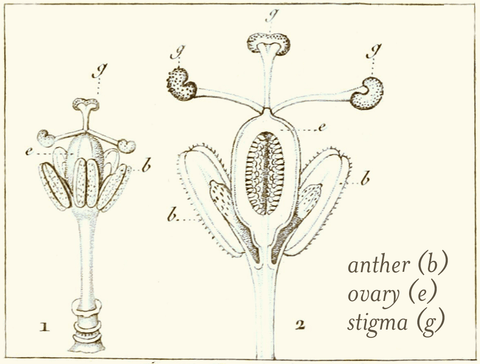
Here are the basic steps to creating your own hybrids.
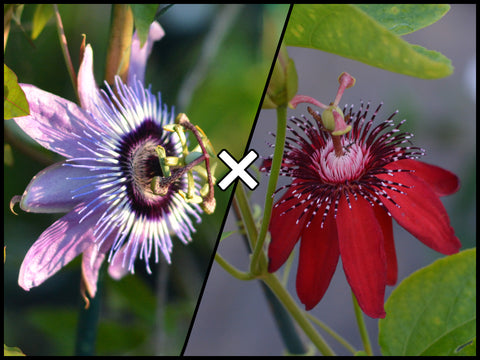
Select two plants that you’d like to cross. Passiflora species that are closely related to each other are more likely to be compatible and produce fruit, but it doesn’t hurt try some more wild crosses either! Many species in the same subgenus will cross-pollinate, but it’s largely a matter of trial and error. Some hybrid plants will set fruit and some won’t, but it’s still worth trying. Experiment! It’s great fun to see what works!

Good tools to have handy are a clipboard (to keep everything together), long tweezers, a pencil, and hanging tags to label your pollinated flowers.


Select the plant that you want to produce the fruit (the maternal parent) and pull all of the anthers off a flower that has just opened. Passion flowers have five anthers that look like flat, fleshy pads hanging from the filaments in the middle of the flowers. In order to prevent the plant from self-pollinating, you’ll want to start fairly early in the morning. When the flower first opens in the morning, the anthers are smooth and don’t have any pollen. Later in the day, the bottom of the anther splits open and the ripe pollen covers the undersurface. Before this happens, use your tweezers to gently remove the unripe anthers. This will lessen the likelihood that the flower will set fruit using its own pollen rather than pollen from a plant of your choosing.
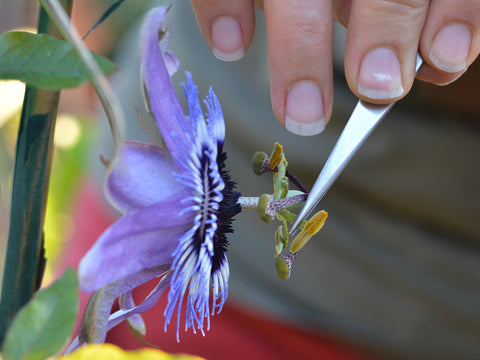
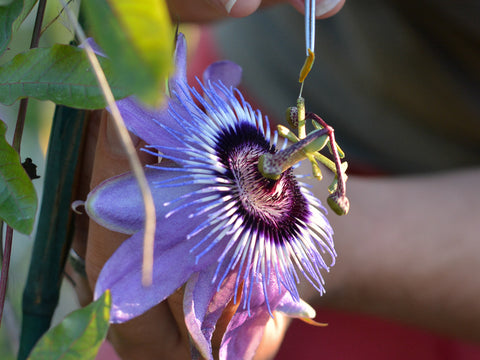
Later in the afternoon, take the ripe anthers off the flower that you want to use as a pollinator (the paternal parent).
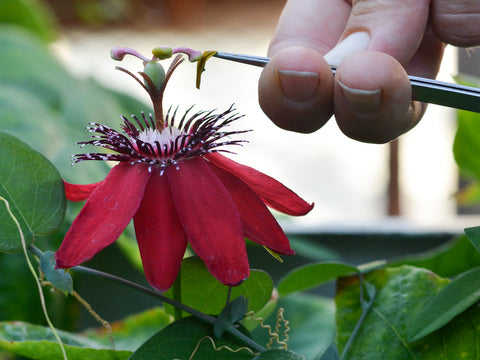

Using the long tweezers, gently rub the pollen-covered underside of the anthers onto the stigma of the maternal parent. The stigma is split into three parts at the very end of the column in the middle of the flower. Rub the pollen onto the very ends of these three parts. After pollination, you will be able to see the pollen that transferred onto the stigma.
![Label your cross with [maternal fruitbearer)] x [paternal (pollinator)].](http://cdn.shopify.com/s/files/1/0204/5602/files/hybridizingpassiflora-14_large.jpg?14459)
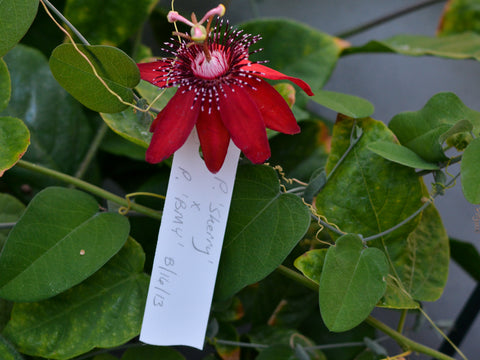
Labeling is important! The general rule for recording crosses is to place the maternal parent (setting the fruit) first and the paternal parent (donating the pollen) second. In this case, I have taken pollen from Passiflora ‘ Betty Myles Young’ and rubbed it onto a flower of Passiflora ‘Sherry’, so my label reads: P. ‘Sherry’ x P. ‘Betty Myles Young’. Make sure to always record the date that the flower was pollinated.
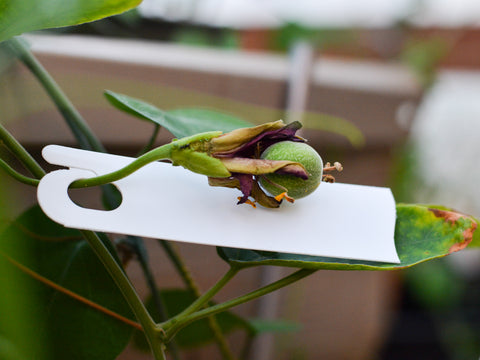
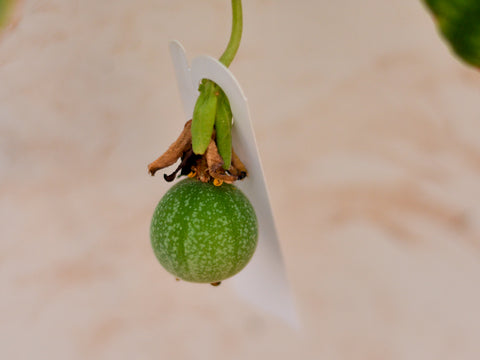
Within 2-3 days, it will be obvious if the cross was successful. The ovary, which starts as a tiny round “mini-passion fruit” in the middle of the flower, will start to swell dramatically as the fruit begins to form. Horray!! After the fruit gets bigger, it will spend several months developing until it is full of pulp and ripe seeds. Don’t get discouraged that the fruit takes so long to ripen; it’s totally worth the wait.
Have fun,
Elizabeth
Do you have any additional tips or tricks? Questions? Let us know in the comments!
Was your pollination successful, meaning do you have a new passiflora, which now handles cold as P. BMY and blooms as easily as P. BMY but perhaps has different flower color? Do you have a pic. of this hybridized new passiflora? Thank you in advance for your response.
Thank you for the beautiful instructional pictures on hybridizing!
Hello,
Is the weather temperature effective in hybridizing?
Is it possible to do self-pollination?
I performed lots of self-pollinations but it turned out to be nothing!
What should I do now? What is the problem?
Thanks for your help…
How do I plant the seeds? Basically, what do I do once I have a ripe fruit? Do I open it up and take the seeds out and dry them? Can I plant them right away or do I need to wait until spring? Thanks for your help.
Comments will be approved before showing up.

Since we ship our plants, they may be a little more stressed than if you were to pick them up at your local...
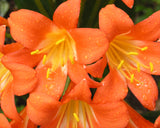
Here are some general "Growing 101" tips to help you with growing your new Clivia plants.
Clivia make excellent houseplants or landscape plants in ...

Elizabeth Peters
Author